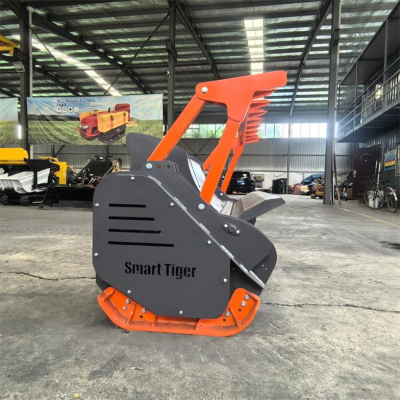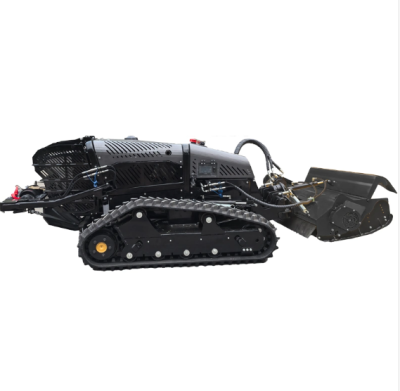Lawn Mowers: Definition, Market Data, and Industry Insights
A lawn mower, also known as a grass cutter or lawn trimmer, is a mechanical tool used for mowing lawns, vegetation, and similar areas. It consists of a blade disc, engine, traveling wheels, traveling mechanism, blades, handle, and control components.
Lawn mowers can be classified based on different criteria:
By travel mode: Intelligent semi-automatic, tow-behind, push-behind, ride-on, and tractor-mounted.
By power source: Man/animal-powered, engine-powered, electric-powered, and solar-powered.
By cutting method: Reel-type, rotary-type, side-hung type, and flail-type.
By cutting requirement: Flat-cut, mid-height cut, and top-cut.
Data shows that the global lawn mower market size was approximately $9.252 billion in 2024 and is projected to grow to $10.195 billion by 2030. In terms of regional distribution, the global lawn mower industry is mainly concentrated in North America, Europe, and the Asia-Pacific region. The market size of lawn mowers in China increased from 2.433 billion yuan in 2018 to 5.394 billion yuan in 2024, with a compound annual growth rate (CAGR) of 14.19%.
Currently, the global lawn mower market presents a competitive pattern characterized by "foreign capital dominance and domestic enterprises catching up". Internationally renowned brands such as Husqvarna (Sweden), Gardena and Stihl (Germany), Makita and Honda (Japan) occupy a major market share by virtue of their profound technological accumulation and brand advantages. Meanwhile, Chinese domestic enterprises represented by DAYE, WORX, Jiafu, EGO, Greenworks, and Yate have risen rapidly through continuous technological innovation and market expansion. They have formed differentiated competitive advantages in product cost-effectiveness, intelligent performance, and localized services, gradually breaking the market monopoly of foreign brands.
Based on this, relying on the in-depth market insight of the lawn mower industry research team under Zhiyan Consulting, combined with years of research data and front-line practical needs, Zhiyan Consulting has launched the Report on China's Lawn Mower Industry Market Panoramic Survey and Industrial Prospect Research (2025-2031). This report adopts a new perspective on lawn mowers, focusing on core industry issues—changing trends (how the industry evolves), user needs (what users demand), investment choices (where to invest), operation methods (how to implement investments), and practical cases (learning from real examples). It aims to collaborate with industry partners to explore new patterns and opportunities for industry development and advance the growth of the lawn mower industry.
Key Insights
1. Relevant Overview
A lawn mower (Lawn mower), also referred to as a grass cutter or lawn trimmer, is a mechanical tool designed for mowing lawns, vegetation, etc. It is composed of a blade disc, engine, traveling wheels, traveling mechanism, blades, handle, and control components.
2. Industry-Related Policies
The development of China's lawn mower industry is primarily supported by national policies promoting agricultural mechanization and ecological environmental protection. In fields such as urban greening, ecological conservation, and lawn maintenance, the government’s growing demand for landscaping machinery has further driven the development of the lawn mower industry.
3. Industry Development Stages
As the largest segment in the gardening tool market, the development of lawn mowers has gone through three main stages:
Manual Mowing Era (1830-1880): Since early times, having a neat lawn has been regarded by the British as a symbol of social status. However, due to limited technological capabilities at that time, only sickles or grazing livestock could be used to trim lawns.
Motorization Era (1890-1950): With the advancement of the Industrial Revolution, manufacturers continuously integrated steam engines, internal combustion engines, and electricity as power sources into lawn mowers, greatly reducing reliance on manual labor.
Intelligent Era (1960-Present): The industry has entered an intelligent development phase, with automation and intelligent control technologies increasingly applied to lawn mowers.
4. Core Nodes of the Industrial Chain
Upstream: Supply of raw materials and components. Raw materials mainly include steel, non-ferrous metals, rubber, and plastics; components primarily consist of engines and battery cells.
Midstream: Production and manufacturing of lawn mowers. Manufacturers process upstream raw materials and components into finished lawn mower products.
Downstream: Sales channels and end-use sectors. Sales channels include supermarket retailers, distributors, and online sales platforms; end-use sectors cover garden decoration trimming, grassland greening trimming, urban street maintenance, green scenic spots, rural area trimming, and field weeding.
5. Global Market Size
Data indicates that the global lawn mower market size was approximately $9.252 billion in 2024 and is expected to reach $10.195 billion by 2030. Geographically, the global lawn mower industry is mainly distributed across North America, Europe, and the Asia-Pacific region.
6. China's Market Size
In recent years, driven by the acceleration of urbanization and the improvement of greening standards, the area of urban green spaces has continued to expand. Coupled with the growing interest of residents in gardening, these factors have jointly fueled the rapid growth of China's lawn mower market. Data shows that China's lawn mower market size increased from 2.433 billion yuan in 2018 to 5.394 billion yuan in 2024, with a CAGR of 14.19%.
7. Trade Situation
Customs data reveals that in 2024, China's export volume of lawn mowers reached 21.922 million units, a year-on-year increase of 59.6%; the export value stood at 17.589 billion yuan, a year-on-year increase of 50.26%. From January to May 2025, China's export volume of lawn mowers was 13.6646 million units, up 35.72% year-on-year; the export value was 12.639 billion yuan, a year-on-year increase of 51.46%.
8. Enterprise Pattern
The global lawn mower market currently follows a competitive pattern of "foreign capital leading, domestic enterprises catching up". International well-known brands such as Sweden's Husqvarna, Germany's Gardena and Stihl, and Japan's Makita and Honda hold major market shares due to their profound technological accumulation and brand strengths. At the same time, Chinese domestic enterprises represented by DAYE, WORX, EGO, Greenworks, Yate andHuaYing have risen rapidly through continuous technological innovation and market expansion. They have formed differentiated competitive advantages in product cost-effectiveness, intelligent performance, and localized services, gradually breaking the market monopoly of foreign brands.
9. Market Trends
With continuous breakthroughs in high-efficiency motor technology and improvements in manufacturing processes, the working efficiency of lawn mowers will achieve a qualitative leap. The operating area per unit energy consumption is expected to increase by more than 30%, bringing more economical operating costs to users.
With the in-depth application of 5G communication and edge computing technologies, lawn mowers will realize more intelligent cluster collaboration and cloud-based management, driving the industry to develop rapidly toward unmanned and autonomous operations.
With the improvement of the green manufacturing system and the widespread application of environmentally friendly materials, lawn mower products will achieve lower carbon emissions in all links, including raw material procurement, production and manufacturing, and use and recycling, contributing to the sustainable development of the industry.




